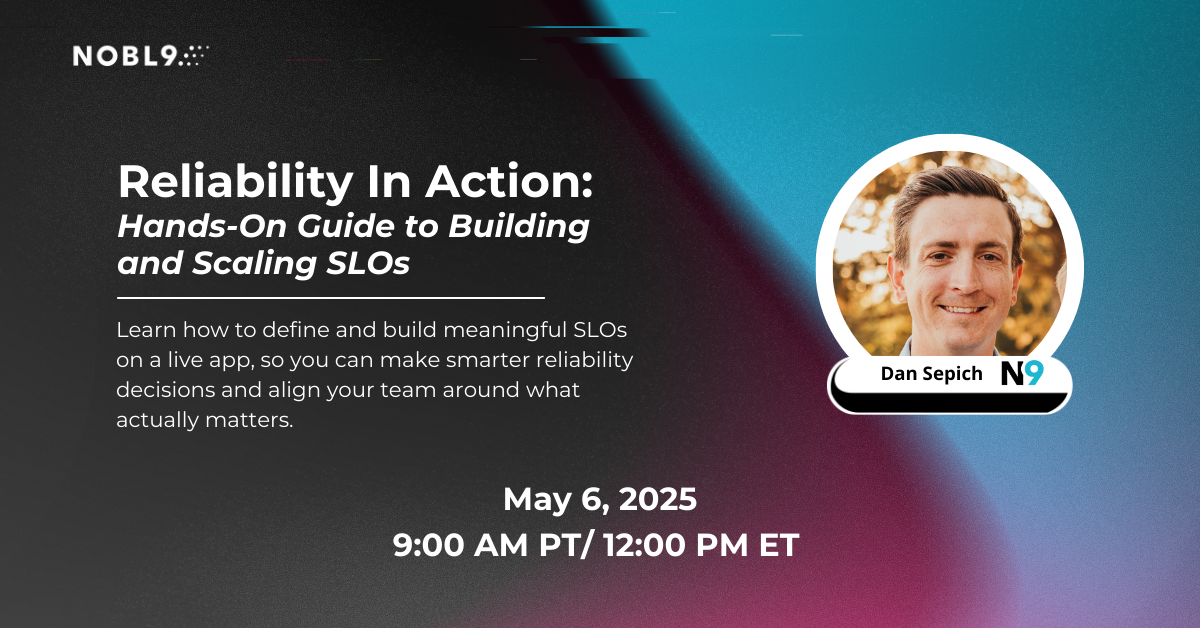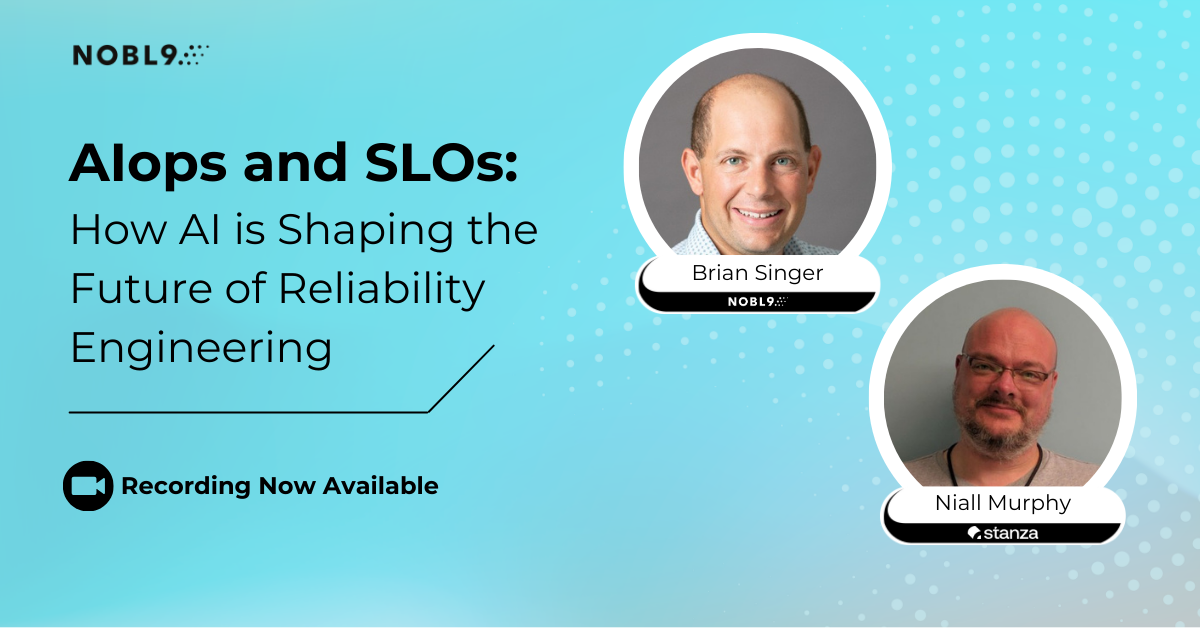| Author: Dan Kurson
Avg. reading time: 4 minutes
Site Reliability Engineering (SRE) has become a cornerstone of modern IT operations, evolving from a niche initiative at Google to a widespread practice essential for ensuring system reliability and performance. This journey highlights the innovative approaches and key individuals who have shaped SRE, the innovations that have stemmed from the industry, and the future of these practices with new regulatory pressures and a plethora of tooling promising to change how SREs fulfill their duties.
The Birth of SRE at Google
Before the inception of SRE, traditional IT operations struggled with managing the increasing complexity and scale of large distributed systems. The rapid growth of the internet and the need for always-on services exposed the limitations of conventional approaches, which were often reactive and manual.
In the early 2000s, Google faced significant challenges in maintaining the reliability of its rapidly expanding services. The company's infrastructure had grown to include thousands of servers across multiple data centers, and managing this scale required a new approach. This led to the creation of the Site Reliability Engineering discipline, spearheaded by Ben Treynor Sloss, who joined Google in 2003. Treynor's vision was to apply software engineering principles to IT operations, emphasizing automation, proactive problem-solving, and continuous improvement.
Key principles introduced by Treynor and his team included using error budgets to balance reliability and innovation, and implementing blameless postmortems to foster a culture of continuous learning. Error budgets helped balance the need for innovation with the necessity of maintaining system reliability, allowing the team to innovate without compromising service quality. This approach prevented over-engineering for reliability and enabled the team to take calculated risks, promoting a culture of growth and continuous improvement. Blameless postmortems fostered an environment of trust and learning, encouraging team members to discuss failures openly without fear of retribution. This practice improved incident response and prevention and enhanced team cohesion and collaboration.
The Development and Importance of SLOs
To set up their observability and monitoring systems, Google developed sophisticated tools that provided real-time insights into system performance and health. Ben Sigelman, while working at Google, invented distributed tracing, which worked as a way to provide a visual map of where requests were slowing down or falling short. In addition, they implemented comprehensive monitoring frameworks that included logging and metrics collection. While these systems offered detailed accounts of real-time observability metrics, SREs lacked visibility into the performance targets that give context to these metrics. Service Level Objectives (SLOs) were a major innovation from Google's initial SRE practices. SLOs defined clear targets for acceptable performance levels, aligning reliability efforts with business and user expectations. By setting these performance benchmarks, SLOs helped SREs focus on what was most critical for user satisfaction and service quality, ensuring that resources were allocated effectively to maintain and improve the reliability of services. This combination of real-time observability and strategic performance targets created a more holistic approach to system reliability and resilience.
SLOs work in tandem with Service Level Indicators (SLIs) and Service Level Agreements (SLAs) to create a comprehensive framework for managing reliability. SLIs are specific metrics that measure a service's performance characteristics, while SLAs are formal agreements on the expected level of service. Together, they help teams prioritize resources and focus on what truly matters for user satisfaction.
The Evolution of SLOs and New Innovations
As the practice of SRE spread beyond Google, the use of SLOs began to spread, too, after the first SRE book was released. As they spread, their scope and capabilities expanded as well. Today, SLOs are critical for managing complex, distributed systems across various industries. Nobl9, founded by Google alums, and sculpted by the author of the book about SLOs, has been at the forefront of this evolution, enhancing the traditional use of SLOs with advanced features and tools directed at enhancing monitoring tools and increasing visibility into the parts of your system that are most critical to the user experience.
Composite SLOs allow organizations to combine multiple SLOs into a single, comprehensive metric, providing a more holistic view of system health. Reliability scoring offers a quantifiable measure of a system's reliability, helping teams identify areas for improvement and track progress over time. These features enable organizations to manage their systems more effectively and ensure higher reliability.
Additionally, Nobl9 provides tools for real-time monitoring, automated alerting, and detailed analytics, making it easier for teams to manage their SLOs and maintain system reliability. These innovations streamline SRE practices and push the boundaries of what is possible with SLOs.
The Future of SRE and SLOs
Looking ahead, the future of SRE and SLOs is bright. As organizations continue to adopt and refine these practices, several trends and advancements are expected to shape the next decade:
- Enhanced Automation and Integration: Integrating advanced automation tools will simplify the management of SLOs, reducing manual effort and improving efficiency. This will enable SRE teams to focus more on strategic initiatives and less on routine tasks.
- Regulatory Influence: Regulations such as the Digital Operational Resilience Act (DORA) will push organizations to adopt more stringent reliability and resilience practices. Compliance with these regulations will necessitate the implementation of robust SLO frameworks and continuous monitoring to ensure adherence to required standards.
- Focus on Customer Journeys: Understanding and optimizing customer journeys will become a central focus. SRE teams must develop SLOs that align with key touchpoints in the customer experience, ensuring that every interaction is reliable and seamless.
- Comprehensive Observability: The demand for enhanced observability will drive the development of tools that provide deeper insights into system performance and user experience. SRE teams must leverage these tools to proactively identify and address potential issues before they impact customers.
- Cultural Shifts and Experimentation: Encouraging a culture of experimentation and learning will be crucial. Organizations that embrace failure as a learning opportunity and invest in continuous improvement will lead the way in innovation and reliability.
- Integration with Security Practices: Security will remain a core pillar of SRE. Integrating security practices into the SRE framework will ensure that systems are not only reliable but also secure against evolving threats.
These trends highlight the evolving nature of SRE and the increasing importance of tools that help organizations manage and optimize their reliability practices.
Conclusion
The evolution of Site Reliability Engineering, from its inception at Google to its current widespread adoption, underscores the importance of reliability in modern IT operations. The development and ongoing evolution of SLOs have been central to this journey, providing a clear framework for managing and improving system performance. With innovative tools and features, the future of SRE and SLOs promises even greater reliability and advancements in user satisfaction.
Nobl9 continues to push the boundaries of what is possible in SRE, helping organizations achieve their reliability goals and ensuring that they are well-prepared for future challenges. For organizations looking to enhance their reliability practices, adopting Nobl9’s advanced SLO tools is a critical step toward achieving and maintaining high-performance systems. If you’d like a demo of our platform, we are happy to walk you through it.









.png?width=1200&height=628&name=Building%20Reliable%20E-commerce%20Experiences%20(24).png)
.png?width=1200&height=628&name=Building%20Reliable%20E-commerce%20Experiences%20(22).png)
.png?width=1200&height=628&name=Building%20Reliable%20E-commerce%20Experiences%20(19).png)






Do you want to add something? Leave a comment